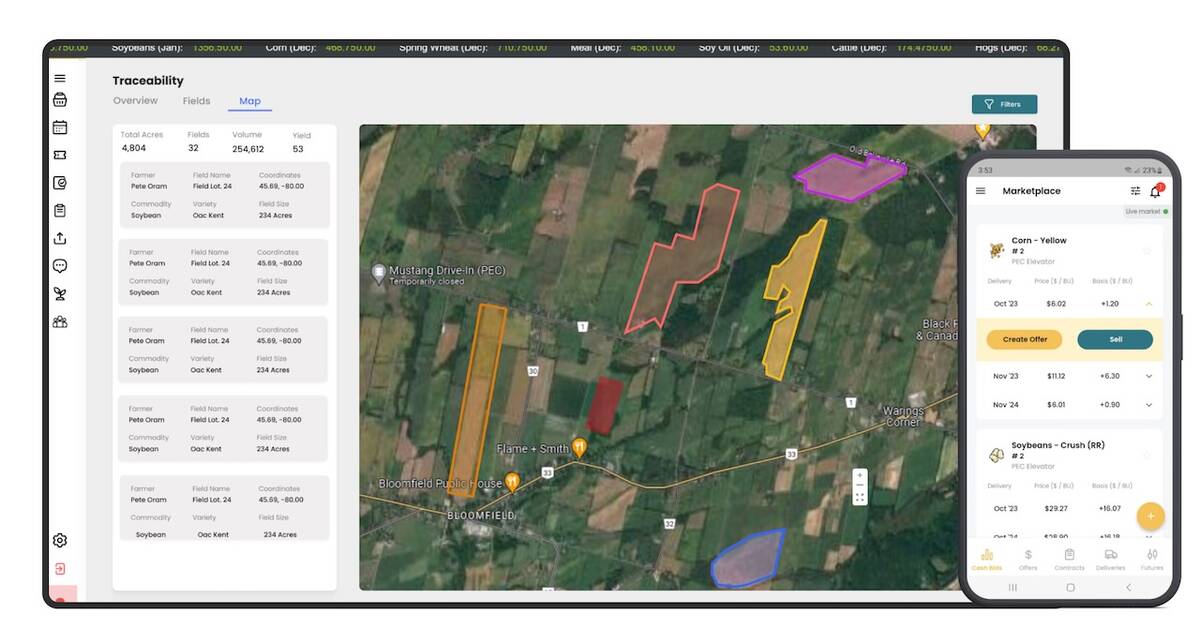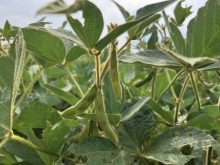Conventional wisdom says that the nitrogen-fixing capability of soybeans leaves substantial nutrients behind for subsequent corn crops.
While true to a degree, Fred Below, University of Illinois plant physiology professor, believes many soybean growers do not realize how much nutrient is being removed by the crop and many could get more from their soybeans if more effort was devoted to fertility programs.
Why it matters: Soybeans might remove more nutrients from the soil than farmers realize. Small changes to fertility management could have significant impact for soybeans and subsequent crops.
Read Also

Ontario company Grain Discovery acquired by DTN
Grain Discovery, an Ontario comapny that creates software for the grain value chain, has been acquired by DTN.
Below said most grain growers in the United States see soybeans as a rotational crop before the real money maker, corn. A wide gap between potential yield and actual yield is the result, since many do not apply enough fertilizer, if any.
The problem is compounded by the amount of nutrient that soybeans remove from the soil.

“We’re not adequately fertilizing soybeans… (It) has to do with the fact it gets (only) some of its nutrient from the nodules,” said Below, in a presentation at the 2022 Ontario Agricultural Conference. About half the nitrogen required by soybeans is derived from nodules. The rest comes from the soil.
It takes four to five pounds of nitrogen, on average, to produce one bushel of soybeans. After accounting for the fertility left in scattered plant matter post-harvest, 60 bushels of soybeans remove about 56 pounds of nitrogen from the soil.
“Soybean does not add nitrogen to the soil. The amount of nitrogen (left) is minus 60 pounds. There is no such thing as a soybean nitrogen credit…The soybean nitrogen credit is actually a corn residue penalty,” says Below.
Other macro nutrients, including phosphorus, potassium and sulphur, as well as micronutrients like zinc, can be removed in surprising quantities. The significance of phosphorus and sulphur, says Below, is particularly overlooked by most American growers.
“Sixty-bushel soybeans remove almost as much (phosphorus) as a 230-bushel corn crop,” he says, and a substantial portion is removed via the seed at harvest.
Below says growers should rethink their soybean fertility strategy and seek ways to improve biological fixation, for example. While some seed treatment inoculums are common, Below’s North American data indicates inoculation has little impact.

“I haven’t seen any benefit of inoculating soybeans… We’ve tried all kinds of other additives, whole different yield levels, and I can’t see any benefit,” he says.
Applying nitrogen in season can bring benefits, although the best application timing might be counterintuitive.
It’s common to deliver nitrogen around the R3 growth stage and before R5, when nodule activity is declining. But in field trials with different application times and different sources of nitrogen, data averages show no negatives. Indeed, “every source at every time” appears to increase yield.
Below also says preplant applications of ammonium nitrate proved to be the best source and time, bringing an average four-bushel increase.
Research reveals more ways to get the most from soybean crop
To replant or not to replant?
They might look tough for a while, but soybeans damaged by frost at the VE growth stage can recover and yield well.
Seeds per pod or pods per plant?
Genetics determine the number of seeds per pod. Pod numbers and seed weight can be influenced by foliar protection.
How close is too close?
Sixty per cent of pods grow in the middle section of the plant. Since pods are provided with energy by the leaf closest to the node on which they grow, getting foliar products onto those leaves can have a noticeable impact. When it comes to nitrogen fertilizer, applying too high a concentration too close to root nodules will inhibit nutrient fixation.
Incremental gains for larger payout
A two-milligram increase in seed weight can gain a bushel per acre. One more pod on every plant amounts to two additional bushels.













